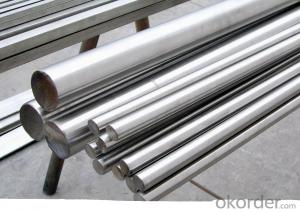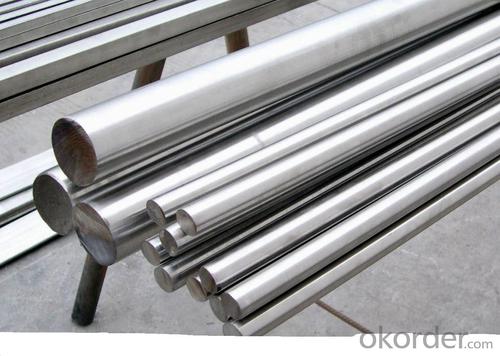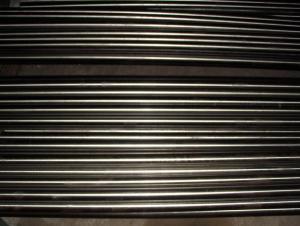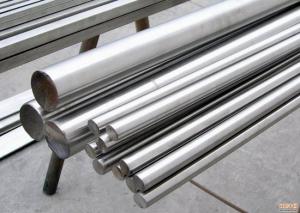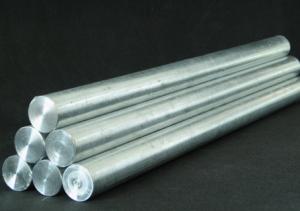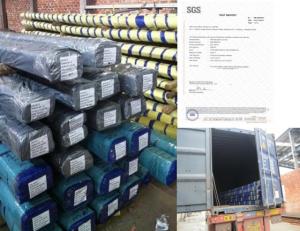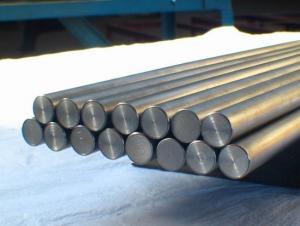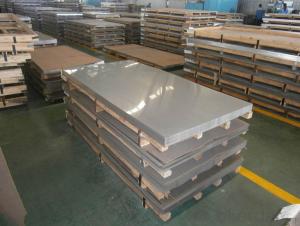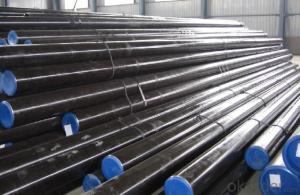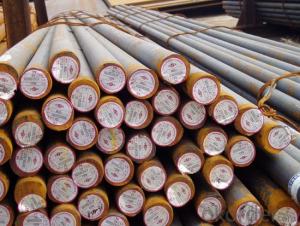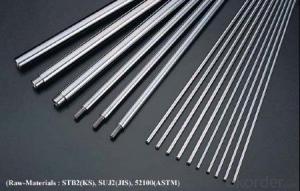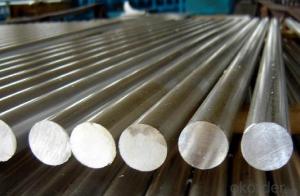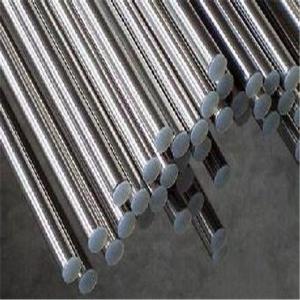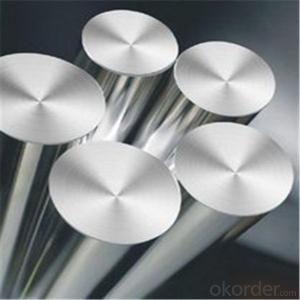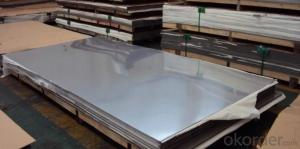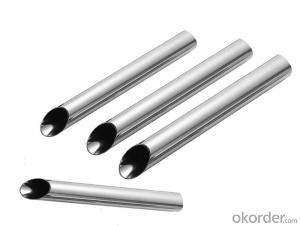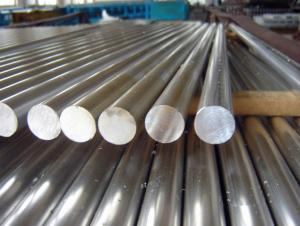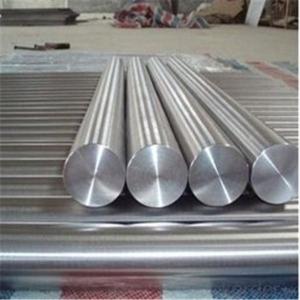316 304 stainless steel round bar polished
- Loading Port:
- Shanghai
- Payment Terms:
- TT OR LC
- Min Order Qty:
- 50 m.t
- Supply Capability:
- 2400 m.t/month
OKorder Service Pledge
OKorder Financial Service
You Might Also Like
Specification
316 304 stainless steel round bar polished
1.Product Description
Stainless Steel Bright Round Bar
Steel Rod , Steel Stick , Stainless Steel Bar, Round Steel
201, 301, 302, 303, 304, 304L, 316, 316L, 321, 309S, 309H, 310, 310S, 2205, 416, 431, 430 etc.
ASTM A276 , ASTM A484
Diameter 2mm to 400 mm or 1/8” to 15”
2 meter to 9 meter or random
Cold Drawn , Peeled , Polished , Bright , Mill Finish , Grinded
H9-H11 or K9-K11 according to ISO Dimensional Tolerance for Bar
72222000
2.Business Terms
Packing
i. Common Standard Export-sea Packing : Each bundle is fixed at lest three times strips , wrapped with durable PVC material .
ii. Special Packing : Covered with film and packed in wooden box .
MOQ:1 Ton
Payment Term:30% advanced T/T payment, the balance before shipment or against copy of B/L
Shipment Term :The goods should be loaded with 20ft container or LCL
Quality Assurance:Mill Test Certificate is provided, Third Party Inspection is acceptable , Free Sample is available for Testing and welcome to our factory for personal inspection .
3.Why Sen Po is your best choice ?
I. We have shown remarkable growth as leading manufacturer and exporter of Stainless Steel Products which are used in various industries.
II. Advantages :Our products are heavily favored for their standard material , excellent finish, optimum strength, long life, corrosion resistance , competitive price and reliable services .
III.We have exported to Ecuador, Singapore, Australia, Vietnam, Indonesia, Malaysia, Turkey, South Africa, Chile, Mexico, Brazil, Peru, Ghana, Bahrain etc. So we are rich in export experience and specialize in stainless steel .
4.Product show
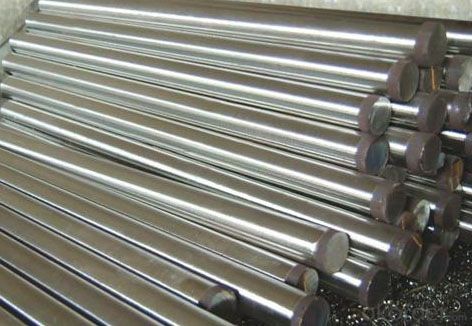
5.FAQ
1.Q: How many days of your delivery?
A: The general delivery is 30~50 days according to your quantity.
2.Q: What's your main market?
A: We mainly export to Middle East and South Eastern Asia. And this year our products enter into South America.
3.Q :Are you factory?
A:Yeah, we are.
4.Q :Which countries do you export to?
A: America, India, Korea, Pakistan, Turkey, Iran and so on.
5.Q :What is the delivery time?
A: If we have stock, we can send goods within 20days. If not, we will delivery goods within 30-45days
6.Q: What is your main payment itme?
A: T/T and L/C
- Q: What are the different types of stainless steel bar grades for high-temperature applications?
- There are several different types of stainless steel bar grades that are suitable for high-temperature applications. Some of the most commonly used grades include: 1. Austenitic Stainless Steel: This type of stainless steel is known for its excellent corrosion resistance and high-temperature strength. Grades such as 304 and 316 are commonly used in high-temperature applications due to their ability to withstand elevated temperatures without losing their mechanical properties. 2. Martensitic Stainless Steel: Martensitic stainless steels are known for their high strength and hardness. While they may not offer the same level of corrosion resistance as austenitic grades, certain martensitic grades such as 410 and 416 are frequently used in high-temperature environments where strength and wear resistance are crucial. 3. Ferritic Stainless Steel: Ferritic stainless steels are magnetic and have good corrosion resistance. These grades, such as 430 and 446, are often used in high-temperature applications where oxidation resistance is required. They also have good thermal conductivity, making them suitable for heat exchangers and furnace components. 4. Duplex Stainless Steel: Duplex stainless steels are a combination of austenitic and ferritic stainless steels, offering the benefits of both. These grades, such as 2205 and 2507, provide excellent strength and corrosion resistance in high-temperature environments, making them ideal for applications in the chemical and petrochemical industries. It is important to consider the specific requirements of the high-temperature application when selecting a stainless steel bar grade. Factors such as temperature, corrosion resistance, strength, and cost should all be taken into account to ensure the chosen grade can withstand the intended conditions.
- Q: What are the different types of stainless steel bars used in oil refineries?
- There are several types of stainless steel bars commonly used in oil refineries, including austenitic stainless steel bars, martensitic stainless steel bars, and duplex stainless steel bars. Austenitic stainless steel bars, such as grades 304 and 316, are the most commonly used due to their excellent corrosion resistance and high temperature strength. Martensitic stainless steel bars, like grade 410, are used for applications requiring high strength and moderate corrosion resistance. Duplex stainless steel bars, such as grades 2205 and 2507, are utilized for their superior resistance to corrosion, stress corrosion cracking, and erosion. Each type of stainless steel bar has its own unique properties and is chosen based on the specific requirements and conditions of the oil refinery.
- Q: Can stainless steel bars be used in structural applications?
- Yes, stainless steel bars can be used in structural applications. Stainless steel is a versatile and durable material that offers excellent strength and corrosion resistance, making it suitable for various structural applications. Stainless steel bars are commonly used in the construction of buildings, bridges, and infrastructure projects where high strength and resistance to environmental factors are required. They are also utilized in the manufacturing of machinery, equipment, and architectural components. The properties of stainless steel, such as its high tensile strength, resistance to fire and extreme temperatures, and low maintenance requirements, make it a reliable choice for structural applications. Additionally, stainless steel bars can be easily fabricated and customized to meet specific design requirements, further enhancing their suitability for structural use.
- Q: Can stainless steel bars be used in aerospace components?
- Indeed, aerospace components can indeed utilize stainless steel bars. Stainless steel, being a versatile and corrosion-resistant material, provides exceptional strength and durability. By and large, it finds extensive application in the aerospace sector for diverse purposes, encompassing structural components, engine parts, fasteners, and fittings. Stainless steel bars are frequently preferred due to their remarkable strength-to-weight ratio, resilience to heat, and capacity to endure extreme conditions, including high temperatures, pressure, and vibration. Furthermore, stainless steel's resistance to corrosion and oxidation renders it suitable for aerospace components exposed to rigorous environments, such as those encountered during flight or space exploration.
- Q: How much temperature would you like to burn the stainless steel bar red?
- When the stainless steel temperature is higher than 500 degrees, as the temperature increases
- Q: Can stainless steel bars be polished?
- Yes, stainless steel bars can be polished. Stainless steel is known for its durability and corrosion resistance, and it can be polished to enhance its appearance. Polishing stainless steel bars involves using abrasive compounds and polishing wheels to remove any surface imperfections, scratches, or stains, resulting in a smooth and shiny finish. Polishing not only improves the aesthetic appeal of stainless steel bars but also helps to maintain their cleanliness and corrosion resistance by eliminating potential areas for bacteria or dirt to accumulate.
- Q: What are the advantages of using stainless steel bars?
- There are several advantages to using stainless steel bars. Firstly, stainless steel bars have high corrosion resistance, making them suitable for use in harsh environments or applications where exposure to moisture or chemicals is common. Additionally, stainless steel bars have excellent strength and durability, allowing them to withstand heavy loads and extreme temperatures. Moreover, stainless steel bars are low maintenance and easy to clean, making them ideal for applications where hygiene is important, such as in the food and medical industries. Lastly, stainless steel bars have an attractive appearance and can be easily shaped and fabricated to meet specific design requirements.
- Q: What are the safety precautions when working with stainless steel bars?
- To ensure a safe work environment when handling stainless steel bars, it is crucial to adhere to specific safety measures. Here are some key precautions to consider: 1. Personal Protective Equipment (PPE): To safeguard yourself from potential hazards, it is essential to wear suitable PPE such as safety glasses, gloves, and steel-toed boots. Cut-resistant gloves are advisable due to the sharp edges and splinters of stainless steel bars. 2. Handling and Lifting: Proper lifting techniques and equipment should be utilized when moving or lifting heavy stainless steel bars. Avoid overloading and, if necessary, employ mechanical lifting devices like cranes or forklifts to prevent strain or injuries. 3. Ventilation: Maintaining adequate ventilation in the working area is crucial to minimize the inhalation of fumes or gases emitted during welding or cutting processes. Proper ventilation preserves air quality and reduces respiratory issues. 4. Fire Prevention: Although stainless steel is non-combustible, sparks generated during cutting or welding operations can pose a fire hazard. Keep the work area free from flammable materials and have appropriate fire extinguishing equipment readily accessible. 5. Electrical Safety: If electrical tools or equipment are used when working with stainless steel bars, it is important to inspect and use them correctly. Avoid using damaged or faulty equipment and always disconnect power sources before making adjustments or repairs. 6. Tool Selection: It is vital to select appropriate tools for cutting or shaping stainless steel bars. Ensure that the tools are in good condition, properly sharpened, and suitable for the specific task at hand. Using the wrong tool can result in accidents or material damage. 7. Secure Work Area: To minimize the risk of accidents, trip hazards, and injuries, it is crucial to maintain a clean and organized work area. Remove any clutter, debris, or loose objects that may cause slips, falls, or other accidents. 8. Training and Knowledge: Adequate training and a thorough understanding of the specific risks associated with working with stainless steel bars are essential. Regular safety training and updates are imperative to maintain a safe working environment. By adhering to these safety precautions, the likelihood of accidents, injuries, or health hazards when working with stainless steel bars can be significantly reduced.
- Q: What are the different sizes available for stainless steel bars?
- Stainless steel bars are available in a wide range of sizes to meet various industrial and commercial requirements. The sizes of stainless steel bars typically include diameter, width, and length measurements. For diameter, stainless steel bars can range from as small as 1/16 inch (1.59 mm) to as large as 24 inches (609.6 mm) or even greater in some cases. The diameter of the bar often determines its primary application and load-bearing capacity. Smaller diameter bars are commonly used in small-scale applications such as jewelry making or precision engineering, while larger diameter bars are more suitable for heavy-duty applications like construction or structural components. Width is another important dimension of stainless steel bars. Width refers to the thickness or breadth of the bar and can vary greatly depending on the specific type of bar. Common widths for stainless steel bars range from 1/8 inch (3.18 mm) to 12 inches (304.8 mm) or more. The width of the bar is typically chosen based on the desired strength, stability, and intended use of the final product. Lastly, the length of stainless steel bars can also vary significantly. Standard lengths for stainless steel bars are often 12 feet (3.66 meters) or 20 feet (6.1 meters). However, custom lengths can be obtained to suit specific project requirements. Longer bars are typically used in construction or industrial applications, while shorter bars may be suitable for smaller projects or specialized applications. In conclusion, stainless steel bars are available in a wide range of sizes, including various diameters, widths, and lengths, to cater to different industries and applications. The choice of size depends on the intended use, load-bearing capacity, and specific requirements of the project or application at hand.
- Q: Are stainless steel bars suitable for nuclear power plants?
- Yes, stainless steel bars are suitable for use in nuclear power plants. Stainless steel is known for its excellent corrosion resistance, which is a crucial characteristic in nuclear power plant environments where exposure to high temperatures, pressures, and radiation can cause corrosion. Stainless steel bars are resistant to both general corrosion and localized corrosion, such as stress corrosion cracking, making them ideal for various applications within nuclear power plants, including structural components, reactor vessels, cooling systems, and fuel storage. Additionally, stainless steel offers great mechanical strength and durability, ensuring the integrity and safety of the plant.
Send your message to us
316 304 stainless steel round bar polished
- Loading Port:
- Shanghai
- Payment Terms:
- TT OR LC
- Min Order Qty:
- 50 m.t
- Supply Capability:
- 2400 m.t/month
OKorder Service Pledge
OKorder Financial Service
Similar products
Hot products
Hot Searches
Related keywords
